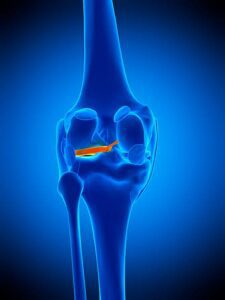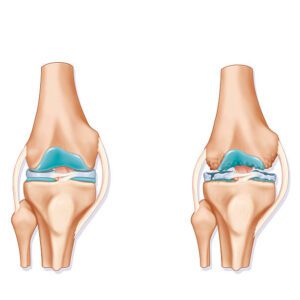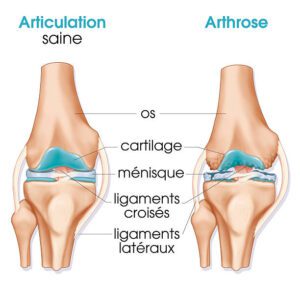Choosing the Right Path for Your Knee Health Meniscus Repair vs Meniscectomy
When it comes to keeping your knees healthy and strong, the meniscus plays a crucial role. But what happens when you injure this vital part of your knee? Two common surgical options emerge—meniscus repair and meniscectomy. But which path is right for you? For athletes, orthopedic patients, and health enthusiasts, understanding the differences between these options is essential. This blog will guide you through the ins and outs of meniscus repair and meniscectomy, helping you make an informed decision for your knee health.
Understanding the Meniscus
The meniscus is a C-shaped piece of cartilage that acts as a cushion between your thighbone and shinbone. Each knee has two menisci—one on the outer edge and one on the inner edge. These cartilage pads play a critical role in stabilizing the knee joint and absorbing shock during activities like running and jumping.
The meniscus can be injured in several ways. Common causes of injury include twisting motions while the foot is planted, sudden stops or turns, lifting heavy objects, or direct impacts to the knee. Athletes often face meniscus injuries due to the high-impact nature of their sports.
Meniscus Repair

Meniscus repair is a surgical procedure aimed at stitching together the torn pieces of the meniscus. This approach is often preferred when the tear occurs in the outer third of the meniscus, where blood supply is richer, allowing for better healing potential. Candidates for meniscus repair are typically younger individuals or athletes who wish to preserve as much of the meniscus as possible to maintain knee function.
The main benefits of meniscus repair include the potential for a more natural knee function and a decreased risk of arthritis in the long term. However, as with any surgery, there are risks such as infection, stiffness, or failure of the repair. It’s important to discuss these risks with your surgeon to make an informed choice.
Meniscectomy
Meniscectomy involves the surgical removal of part or all of the meniscus tissue. This procedure is typically performed when the tear is in a region with poor blood supply, making natural healing unlikely. A partial meniscectomy removes only the damaged section of the meniscus, while a total meniscectomy removes the entire meniscus.
Meniscectomy is often necessary when the meniscus is extensively torn or when previous repairs have failed. Although this procedure can provide relief from pain and improve knee function, it also carries potential complications. Patients may experience increased stress on the knee joint, leading to early-onset arthritis.
Decision Making Repair vs Removal
Choosing between meniscus repair and meniscectomy can be challenging and depends on various factors. These include the tear’s location, the patient’s age, activity level, and overall knee health. Surgeons assess these factors to recommend the most appropriate treatment plan tailored to individual needs.
Real patient stories highlight the differences in outcomes between the two procedures. Some patients who underwent meniscus repair reported a gradual return to their active lifestyles, while those who had a meniscectomy noted quicker recovery but faced challenges down the road.
Recovery and Rehabilitation
Both meniscus repair and meniscectomy require dedicated post-surgery care and rehabilitation. After a meniscus repair, patients often follow a structured rehabilitation program that may include physical therapy and restricted weight-bearing activities for several weeks. Recovery can take several months, especially for athletes aiming to return to high-impact sports.
Meniscectomy, on the other hand, typically involves a faster recovery timeline. Patients may be able to bear weight on the knee sooner and experience less postoperative pain. However, a comprehensive rehabilitation plan is crucial to regain strength and prevent future knee issues.
The Future of Meniscus Treatments

The field of meniscus treatments is continually evolving, with emerging non-surgical and minimally invasive options on the horizon. Researchers are exploring regenerative therapies and biologics, such as platelet-rich plasma (PRP) injections, to promote meniscus healing without surgery.
Ongoing studies in meniscus repair and regeneration hold promise for improved outcomes and quicker recoveries. Staying informed about these advancements can provide patients with new options for their knee health in the future.
When it comes to choosing between meniscus repair and meniscectomy, understanding the differences and implications of each procedure is paramount. Both options have their unique benefits and challenges, and the right choice depends on individual circumstances.
Consulting with healthcare professionals and orthopedic specialists is crucial to making an informed decision about your knee health. They can provide personalized insights and recommendations based on your specific needs and lifestyle goals.
Consider sharing this post with others in your community who may be facing similar decisions. By staying informed and engaged, you can take proactive steps toward maintaining your knee health.
References
- WebMD. “Knee Injuries and Disorders.” Accessed November 2023. WebMD.
- Mayo Clinic. “Meniscus Tears.” Accessed November 2023. Mayo Clinic.
- American Academy of Orthopaedic Surgeons. “Meniscus Tears.” Accessed November 2023. AAOS.

